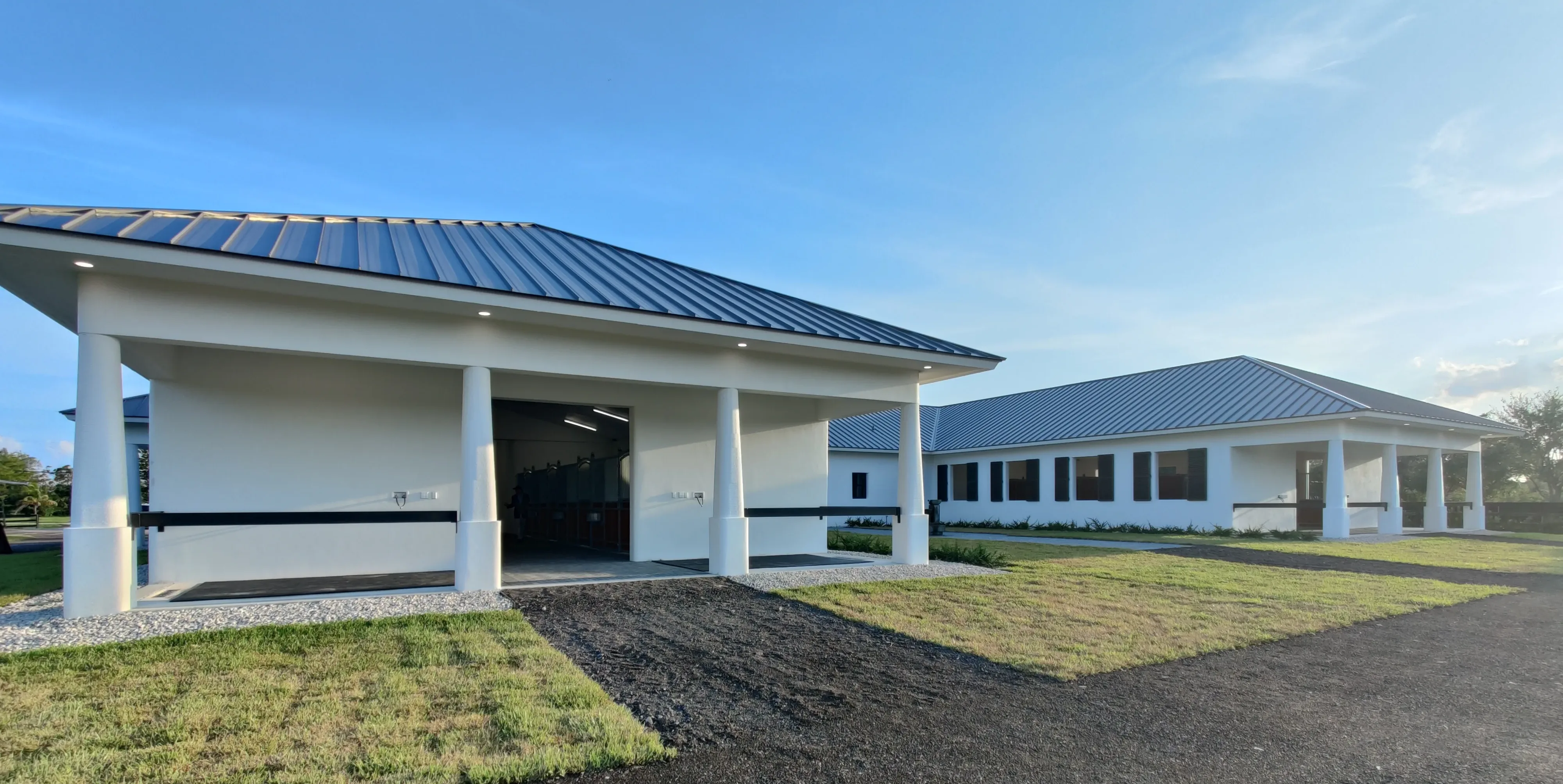
Concrete Columns at Wellington Farms
Concrete columns are a fundamental part of architecture, but at Wellington Farms, they became a showcase of innovation. Printera produced and delivered over 30 custom concrete columns for this equestrian estate—one of the largest 3D printed installations of its kind.
We handled the production of all the concrete columns featured across the property. These components weren’t just structural supports, they also contributed to the visual character of the 3D printed estate.
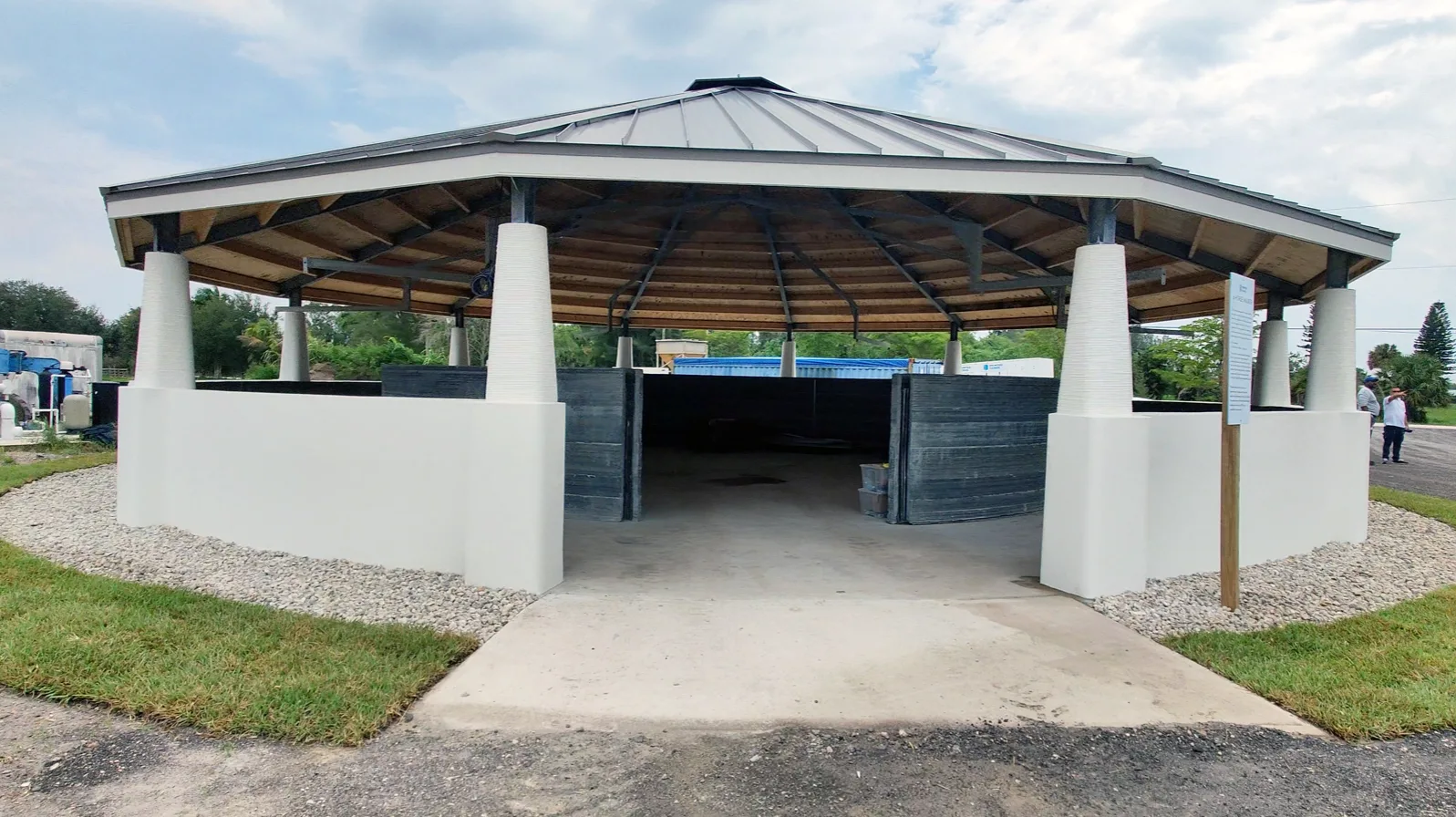
Scaling Up with Custom Concrete Columns
Producing these custom concrete columns using traditional methods would have required labor-intensive formwork, long setup times, and limited flexibility for design changes. In contrast, our Pre-Printed method allowed us to manufacture each column off-site with speed and total design freedom.
Whether the columns needed slight variations in height, diameter, or curvature, we were able to adjust them digitally and move directly into production. Printing in a controlled environment ensured uniform surface finishes and precise dimensions—while allowing us to produce custom elements without slowing down the timeline.
This process also let us align production with the project’s construction schedule, keeping installation on track and minimizing site disruption.
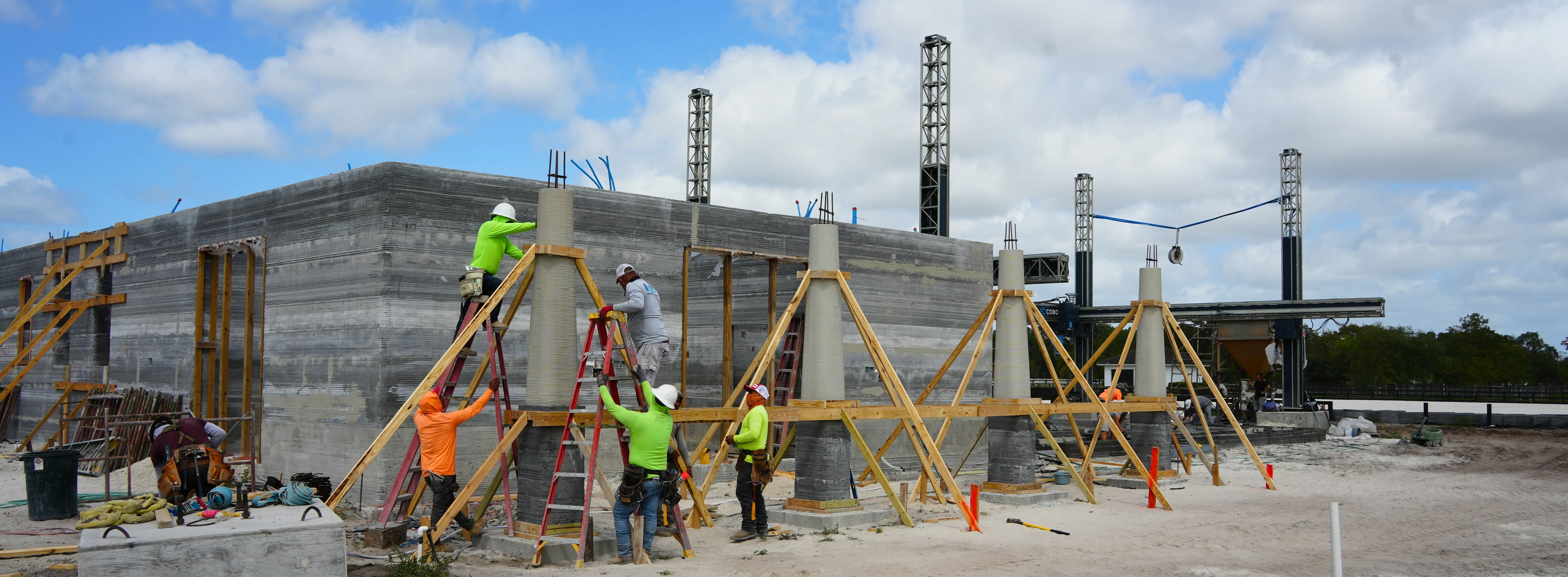
Built for Strength, Designed with Intent
The concrete columns were printed with durability in mind, using a mix designed to perform in Florida’s outdoor environment. Each column was created from a digital model, allowing for fine-tuned dimensions and consistency across the full set.
The visible texture is a natural result of the 3D printing process and doesn’t require any additional smoothing or surface refinishing. For this project, columns were delivered in raw concrete and finished on-site with paint and protective coatings.
After installation, a tornado spawned by Hurricane Milton passed through the area. Despite the severe conditions, the columns showed little to no damage—a clear, real-world demonstration of their strength.
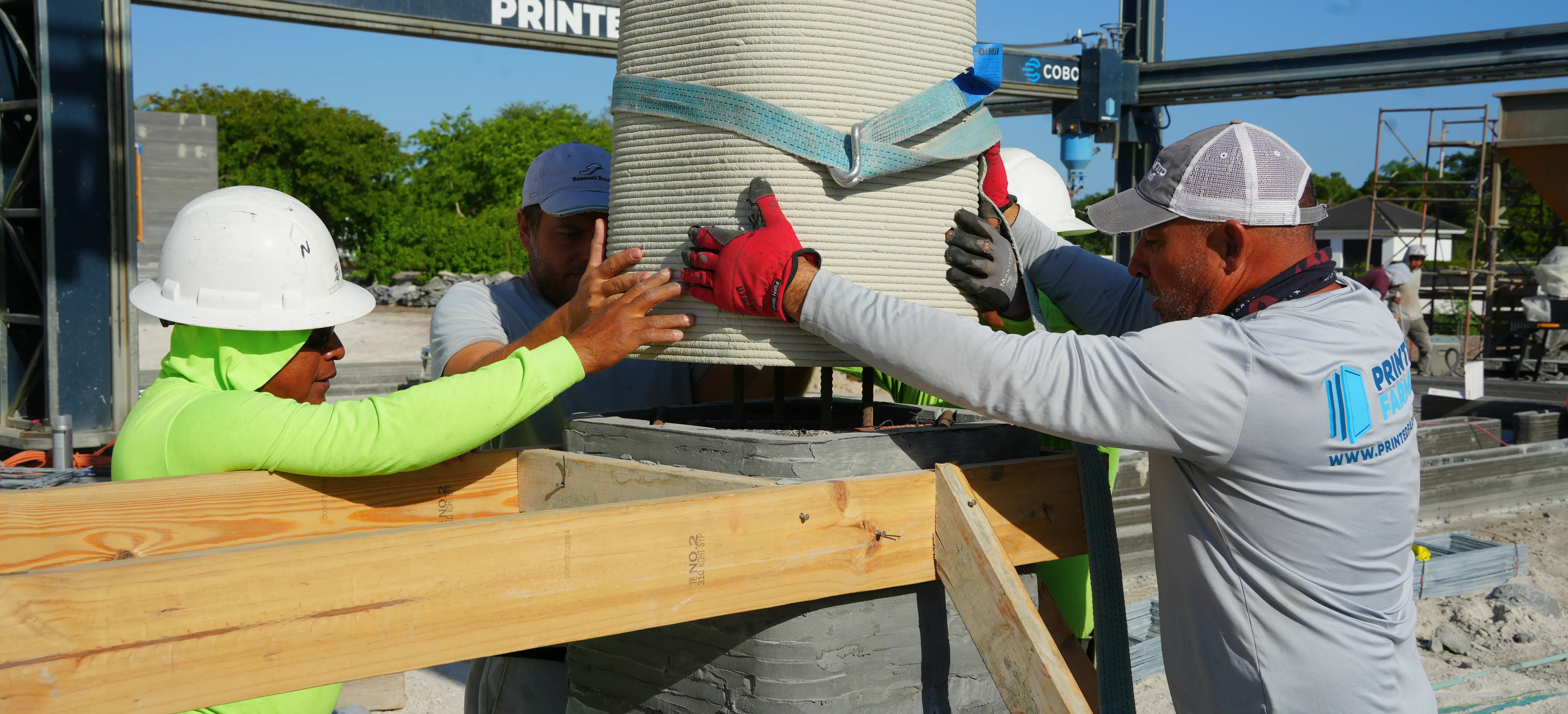
Integrating Custom Components into Large-Scale Builds
This project was a collaboration between multiple teams. While the main structure was printed on-site by Printed Farms using a gantry system, our pre-printed concrete components were fabricated off-site and delivered ready for installation.
Together, the project demonstrates how different 3D printing methods can complement one another—combining large-scale structural printing with custom components to streamline the build process and preserve design intent.
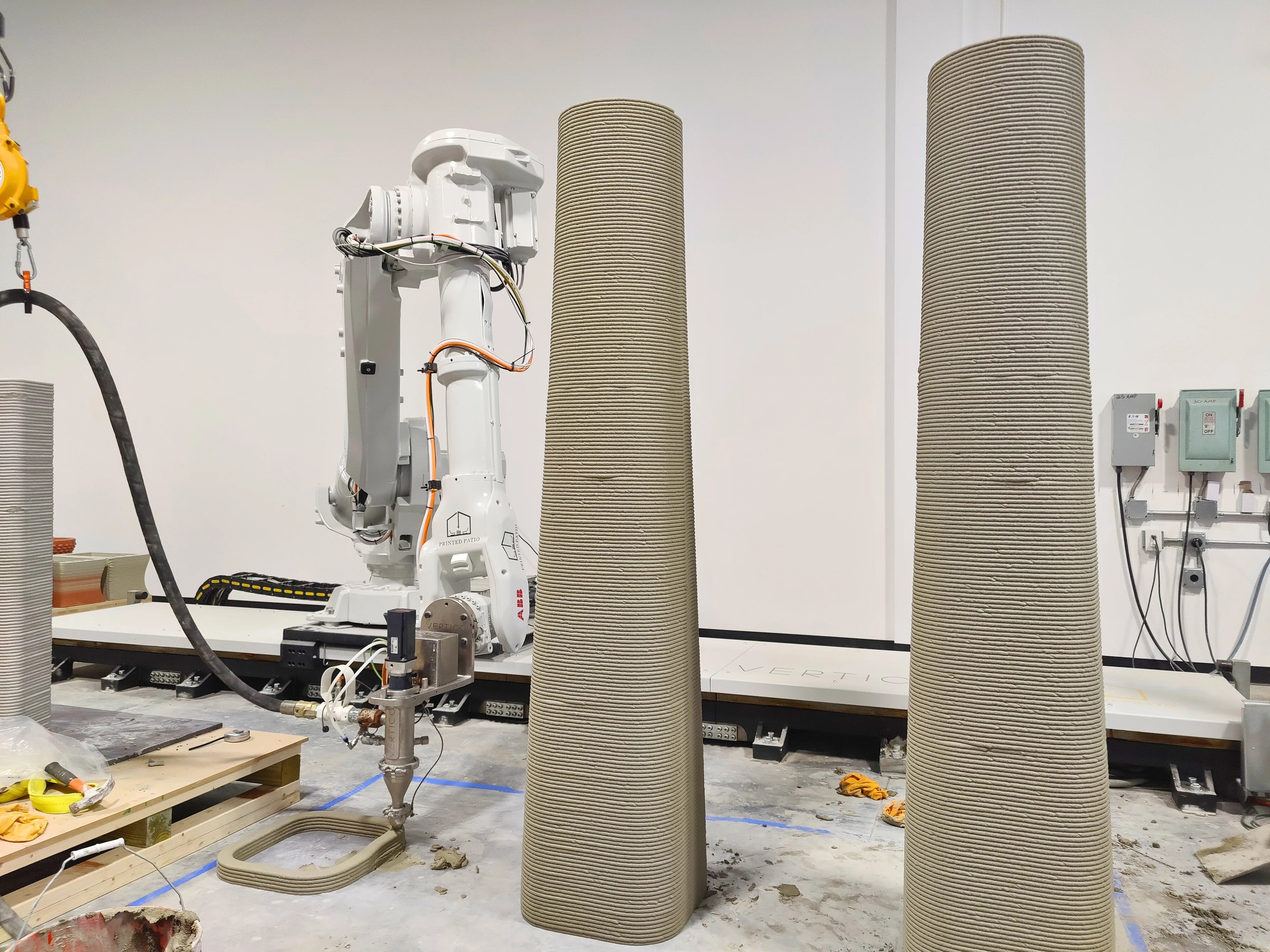
Reinventing What Columns Can Be
This project proves that concrete columns don’t have to be generic. With digital design and 3D printing, they can be both structural and expressive. Whether you’re designing one feature or dozens, this approach offers flexibility without compromise.
Want to talk about your next project? Let’s connect. Explore more examples of our work in our project gallery.